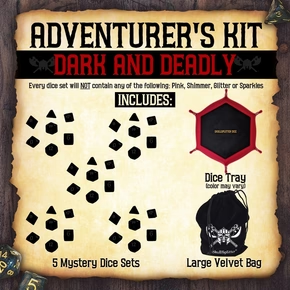
Rakshasa 5e
Tiger Demon Burning Bright
Rakshasas have been prowling through D&D since 1st edition. Inspired by India’s mythological demons, these cats are an absolute nightmare for 2nd tier adventures and are often the classic recurring villains. These fiends love the luxury afforded by the material plane but have brought with them all the malicious genius usually reserved for the deepest layers of hell. So, how should they be used in your adventures? What should you do when facing down these aristocratic tigers? Compose yourself and grab some finery befitting a Rajah as we go through everything you need to know.
Table of Contents:
Indian Culture
Before we plunge forward, I wanted to place a small disclaimer here. Rakshasas are prevalent in Indian mythology, history, and religion. They are depicted often as shapeshifting monsters that consume the flesh of man, but are also mentioned as heroes, magical warriors, and simply as a people group. They’re mentioned in a positive light in both Buddhist and Jainist texts and there’s significant evidence that the “rakshasas” were simply an Indian tribe that was demonized over multiple generations through revisionist histories and storytelling.
There have been some outcries in recent years about the D&D version of the Rakshasa, even if it is fairly faithful to at least one historic representation of them. No judgment just thought it was important to put this information front and center if you’re planning on including them in your next adventure.
Rakshasa Fundamentals
Physically, rakshasas can look however they like. Shape shifting and illusions are their bread and butter, so 9 times out of 10 you’ll be seeing a disguise they put on rather than their true forms. Their true forms are actually pretty tame by fiend standards. Their true form looks humanoid save for an animal head and a matching coat of fur. Their most common animal head is that of a Bengal tiger (and that’s really all we get in 5e) but in their original lore it gets all kinds of crazy. Tigers feature prominently but we also get ape heads, alligator heads, praying mantis heads, and rarely we even get multiple heads.
Beyond choosing from a zoo’s worth of possible animal heads, their other prominent physical quirk is their hands. Their hands are backwards (palm facing up). Why are their hands like this? No clue, I’ve done some digging into it but there’s nothing about this whole hand situation in the original myths amongst the numerous interpretations of them other than in D&D, where that aspect of them seems to have started. It’s really odd, but the real answer seems to be that Gary Gygax thought it would look cool that way.
Moving past the looks, rakshasa epitomize the “evil nobleman” tropes. For the most part their only motivation for existing on the material plane is collecting wealth and power. They’re powerful sorcerers and practiced liars. It doesn’t take rakshasas long to lie, steal, and murder their way into positions of power and luxury. Positions they’re usually abusing to increase their wealth and take petty revenge on anyone that slights them. Their fiendish nature means that death on the material plane is only an inconvenience. They’ll reform in hell and simply work their way out of the pit to take their revenge on whoever dared to strike them down. When not off questing for revenge the base state of any given rakshasa is lounging among their riches, bedecked in silk finery and jewelry working multiple schemes to acquire even more wealth.
Rakshasa Stats
We’ve got a “foot soldier” variant and some named rakshasas in 5e but unlike some previous iterations we’ve just got the “tiger form” rakshasa stats to work with.
Rakshasa
Medium fiend, lawful evil
Armor Class 16 (natural armor)
Hit Points 110 (13d8 + 52)
Speed 40 ft.
STR DEX CON INT WIS CHA
14 (+2) 17 (+3) 18 (+4) 13 (+1)16 (+3)20 (+5)
Skills Deception +10, Insight +8
Damage Vulnerabilities piercing from magic weapons wielded by good creatures
Damage Immunities bludgeoning, piercing, and slashing from nonmagical attacks
Senses darkvision 60 ft., passive Perception 13
Languages Common, Infernal
Challenge 13 (10,000 XP)
Limited Magic Immunity. The rakshasa can’t be affected or detected by spells of 6th level or lower unless it wishes to be. It has advantage on saving throws against all other spells and magical effects.
Innate Spellcasting. The rakshasa’s innate spellcasting ability is Charisma (spell save DC 18, +10 to hit with spell attacks). The rakshasa can innately cast the following spells, requiring no material components:
At will: detect thoughts, disguise self, mage hand, minor illusion
3/day each: charm person, detect magic, invisibility, major image, suggestion
1/day each: dominate person, fly, plane shift, true seeing
ACTIONS
Multiattack. The rakshasa makes two claw attacks.
Claw. Melee Weapon Attack: +7 to hit, reach 10 ft., one target. Hit: 9 (2d6 + 2) slashing damage, and the target is cursed if it is a creature. The magical curse takes effect whenever the target takes a short or long rest, filling the target’s thoughts with horrible images and dreams. The cursed target gains no benefit from finishing a short or long rest. The curse lasts until it is lifted by a remove curse spell or similar magic.
Using Rakshasa as a DM
Rakshasas tend to make great BBEGs (big bad evil guys) for tier 2 play but seem tailor-made for recurring villains at tier 3 play. Their fiendish ability to resurrect in hell combined with their petty natures often means that a single rakshasa can harass your players repeatedly, simply returning from hell whenever you need an antagonist in the plot again. This works up until the players have the capacity to simply visit hell and murder your big bad tiger there. Generally, this means you’ll be free to use them as recurring villains until 13th or 14th level, but be prepared for the side-trip to hell your players will insist upon in order to murder the cat once and for all.
Stepping back from their overall role and looking at their stats for a moment, it’s important to note how much of their strength is defensive. Their hit points and AC aren’t impressive, their spells are powerful but not overtly damaging, and their attacks have a pitiful damage output for a CR 13 creature with a curse that does nothing in the short term. What they have instead is one of the most insane spell immunity abilities that exist on a monster, and a ton of abilities that make them difficult to find. 1st through 12th level spellcasters will be completely nerfed fighting a rakshasa and the martial classes will need magical weapons to put a scratch on them. But even with all this survivability, mostly what the rakshasa can physically do to the PCs is curse a couple of them and run away.
Rakshasas are intellectual enemies that should be trying to outsmart the PCs rather than take them on directly. They should be the obnoxious lord ordering the PCs deaths rather than the monster that fights them directly. They should rely on additional minions to deal the actual damage, interjecting a few spells for their own amusement and disappearing if the tide turns against them. Or, if it really is “rakshasa vs party” time, the rakshasa should employ hit and run tactics. The rakshasa’s curse ability is horrible to deal with amongst other threats and forces the players to use up valuable spell slots removing the curses, or worse, cuts them off from healing if they lack curse curing magic. In this way a rakshasa can wear the players down as they combat other threats over time and come in for the kill once the players are on their last legs.
Fighting a Rakshasa
If your DM simply throws the rakshasa at you point blank, you can treat it like a golem fight on steroids. Assuming nobody in your party has access to 6th level spells you can assume the spellcasters are going to be unable to touch it and they should focus on healing, buffing, or any other abilities they have that don’t directly affect the rakshasa. If you do have some 7th level spells in your pocket, fire them off immediately. They have zero protection against any spells 7th level or higher and a well-timed finger of death spell or a powered-up fireball can solve the problem right at the get go.
Martial classes are the “intended” route for defeating a rakshasa, and assuming you can actually get to it (and it’s not invisible or playing tricks) they shouldn’t be all that difficult to damage. Simply make sure you’ve got some baseline magical weapons at hand and take a swing. Their AC and hit points aren’t great, so expect them to try absolutely everything to stay out of your reach after it manages to get a claw into you.
Speaking of those claws, they are some nastiness. The damage is minor, but they automatically curse you! No saving throw, no nothing, you usually aren’t even aware you were cursed until you try resting. The curse magically stops you from regaining hit points during a short or long rest and it only goes away with a remove curse spell or similar ability. Sadly, it’s exactly when you’re figuring this out that rakshasas often move in for the kill.
When fighting a rakshasa, expect hit and run tactics, along with a ton of mind games. Think along the lines of a cat playing with their food. If you fight a rakshasa and it gets away without being dragged down to hell, expect to fight it again within the day. Be extra cautious as you rest, and try to save any slots for curse removal that you can spare. And if it doesn’t come back the same day, be extra suspicious of any noble you run into until that cat is accounted for. I’ve yet to fight a rakshasa that my DM didn’t bring back to cause headaches at least once.
Final bit of advice for fighting rakshasa (which is admittedly party dependent), is bring a paladin with a spear. Rakshasas have a strangely specific damage vulnerability to “piercing damage from magic weapons wielded by good creatures”. A solid paladin smiting with a spear (or other piercing weapon) can end one of these kittens in only a couple hits with some good rolls. Throw your paladin a spear and let them take the lead on these fights and you’ll likely come out on top.
--
Enjoy this Guide? You May Also Like:
Need a New Dice Set? Check out our RPG Dice here. They are perfect for every gamer as a gift or just treating yourself!
Thinking about other classes? Check out our giant list of D&D 5e Tools and Tips here.
New to find a D&D Group? Check out our guide on How to Find a D&D Group.

Disclaimer
Last updated: January 27, 2019
The information contained on www.SkullSplitterDice.com website (the "Service") is for general information purposes only.
www.SkullSplitterDice.com is a participant in the Amazon Services LLC Associates Program, an affiliate advertising program designed to provide a means for sites to earn advertising fees by advertising and linking to Amazon.com. (source: Section 5)
Blueshift Nine, LLC assumes no responsibility for errors or omissions in the contents on the Service.
In no event shall Blueshift Nine, LLC be liable for any special, direct, indirect, consequential, or incidental damages or any damages whatsoever, whether in an action of contract, negligence or other tort, arising out of or in connection with the use of the Service or the contents of the Service. Blueshift Nine, LLC reserves the right to make additions, deletions, or modification to the contents on the Service at any time without prior notice.
Blueshift Nine, LLC does not warrant that the Service is free of viruses or other harmful components.
Affiliate disclaimer
This affiliate disclosure details the affiliate relationships of Blueshift Nine, LLC with other companies and products.
Some of the links are "affiliate links", a link with a special tracking code. This means if you click on an affiliate link and purchase the item, we will receive an affiliate commission.
The price of the item is the same whether it is an affiliate link or not. Regardless, we only recommend products or services we believe will add value to our readers.
By using the affiliate links, you are helping support the Service, and we genuinely appreciate your support.
Affiliate advertising programs that the Service uses are:
- Amazon Services LLC Associates Program
- As an Amazon Associate, I earn from qualifying purchases.
- Blueshift Nine, LLC is a participant in the Amazon Services LLC Associates Program, an affiliate advertising program designed to provide a means for sites to earn advertising fees by advertising and linking to Amazon.com or endless.com, MYHABIT.com, SmallParts.com, or AmazonWireless.com.
- Pages on this Service may include affiliate links to Amazon and its affiliate sites on which the owner of this Service, Blueshift Nine, LLC, will make a referral commission.


